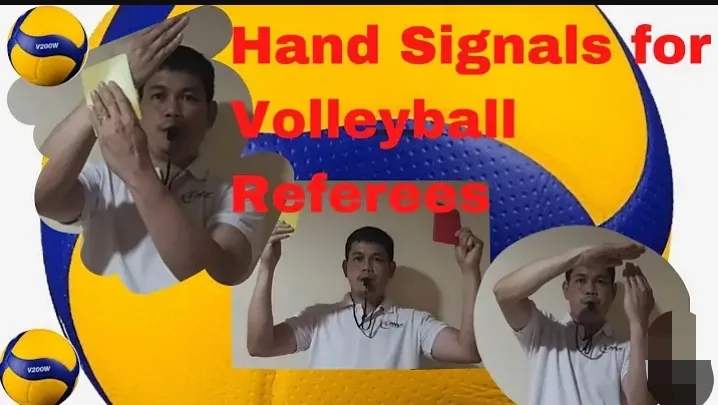Volleyball referee signals are a series of specific hand movements and gestures used by volleyball referees in communicating decisions, ensuring fair play, and maintaining the flow of the game.
In this article, we will look at different signals used by volleyball referees and explain what they mean. Understanding these signals can greatly enhance your experience as a player, coach, or spectator, allowing you to follow the game more closely and appreciate its nuances.
What Are Volleyball Referee Signals?
Volleyball referee signals are standardized hand gestures used by referees to communicate important decisions during a match. These signals cover everything from points scored, fouls, substitutions, timeouts, and other critical aspects of the game. The use of these signals ensures clear and efficient communication between the referees, players, coaches, and even the audience, regardless of language barriers.
Volleyball Referee Hand Signals
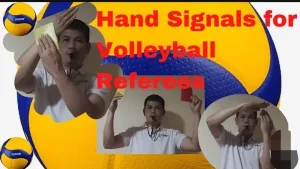
There are various types of volleyball referee signals, each serving a specific purpose. Understanding these can help you follow the game better and appreciate the role of the referees in managing the match.
1. Point or Side Out Signal
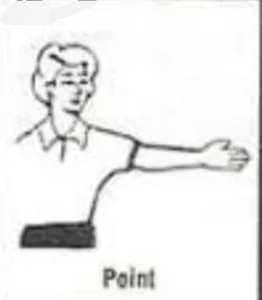
This is one of the most common volleyball referee signals. To indicate which team has won the point, the referee extends their arm towards the side that scored. For example, if Team A wins a point, the referee will raise their arm in the direction of Team A’s court.
2. Timeout Signal
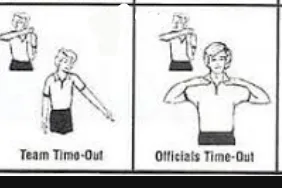
When a timeout is called, the referee will form a “T” shape with their hands. This signal tells both teams to pause, allowing coaches to discuss strategy or give players a short break. For instance, if a team is losing momentum, the coach might call a timeout to refocus the players.
3. Substitution Signal
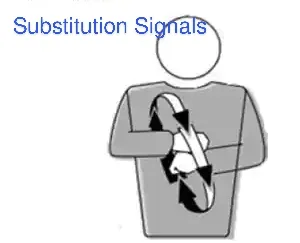
When a team wants to make a substitution, the referee signals this by rotating their forearms around each other in a circular motion. This indicates that a new player is coming onto the court to replace another. Substitutions can happen several times in a game, especially in intense matches where players may need rest or tactical changes.
4. Double Contact or Ball Handling Fault Signal
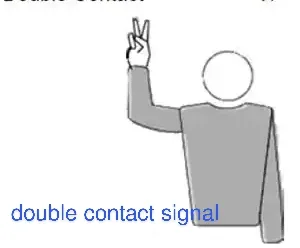
This signal is used when a player makes two consecutive touches on the ball or commits a ball handling error. The referee will raise two fingers to indicate a double contact violation. This often happens when a setter mishandles the ball, causing it to spin excessively or be unevenly contacted.
5. Ball In or Out Signal
To indicate whether the ball landed inside or outside the court boundaries, the referee will point their arm towards the court for “in” or stretch it outward to the side for “out.” For example, if a spike lands near the line, this signal clarifies if the ball was in play or not.
Other Important Signals
- Serve signals
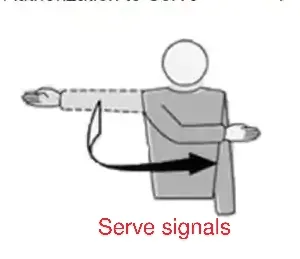
- Change of Courts
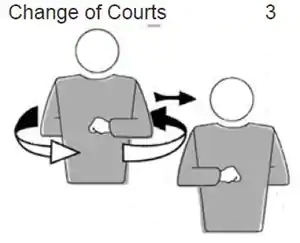
- Expulsion
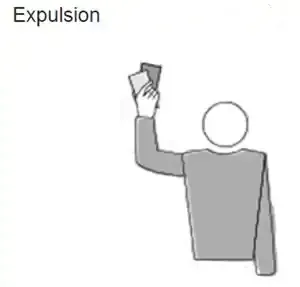
- End of set or match
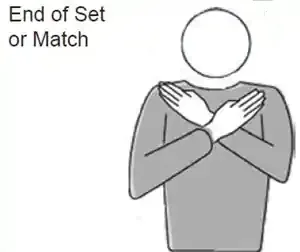
Volleyball referee hand signals with picture
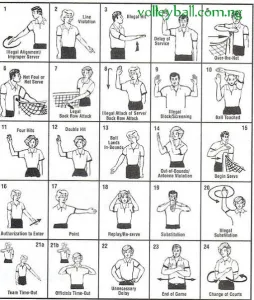
Referees use the above signals for different circumstances indicated on the image to communicate important decisions during the match like net touches, back-row attacks, and illegal attacks. Each signal is precise to ensure there’s no confusion about what rule was violated.
Differences Between First and Second Referee Signals
Volleyball games are typically officiated by two referees: the first (head) referee and the second referee. While both referees use signals, their roles and the signals they use can differ. The first referee usually stands on a raised platform at one end of the net and makes most of the primary calls, such as point scoring and ball handling errors. The second referee stands on the opposite side of the court and assists with calls like net violations or rotational faults. Understanding their distinct signals helps everyone on the court know which referee is making a call and for what reason.
Importance of Knowing Volleyball Referee Signals
Knowing volleyball referee signals is crucial for players and coaches, as it helps them respond quickly and appropriately during a game. For example, recognizing the substitution signal allows a coach to quickly make strategic changes, while understanding a double contact signal helps players adjust their techniques to avoid penalties.
For spectators, knowing these signals enhances the viewing experience by making the game more engaging and easier to follow. Imagine watching a game without understanding what’s happening every time the referee raises a hand—it would be confusing and less enjoyable. Knowing the signals allows fans to appreciate the strategy and skill involved in every play.
Visual Guide to Volleyball Referee Signals
Understanding these signals is easier with visual aids. Watching videos, studying diagrams, or attending live games can help you recognize and remember the different referee signals. This visual learning approach helps players, coaches, and fans familiarize themselves with the rules and nuances of the game, making volleyball more accessible and enjoyable for everyone.
FAQs: volleyball referee signals
1. Why do volleyball referees use hand signals?
Volleyball referees use hand signals to communicate decisions clearly and efficiently to players, coaches, and spectators. Since volleyball is a fast-paced game, verbal communication might not be effective, especially in noisy environments. Hand signals help ensure that everyone understands what is happening on the court.
2. What is the signal for a timeout in volleyball?
The signal for a timeout in volleyball is formed by the referee making a “T” shape with their hands. This indicates a pause in the game, usually requested by a team to discuss strategy or by the referee to address an issue.
3. How can players benefit from understanding volleyball referee signals?
Players benefit from understanding referee signals because it helps them react promptly to decisions and adapt their strategies. For example, if a player sees a double contact signal, they know to adjust their technique to avoid a similar fault in the future.
4. Are volleyball referee signals the same in all leagues?
While most volleyball referee signals are standardized internationally, there can be slight variations depending on the league or governing body. However, the core signals, such as point, timeout, and substitution, are generally consistent across all levels of play.
5. How do referees indicate a point in volleyball?
To indicate a point, the referee extends their arm toward the team that won the point. This simple gesture clearly shows which side has been awarded the point.
6. Why do some referees stand on a platform in volleyball?
The first (head) referee stands on a platform to have a better view of the entire court, making it easier to see plays, monitor for faults, and make accurate calls. The elevated position allows them to observe the action from a strategic vantage point.
By understanding volleyball referee signals, you can enhance your appreciation of the sport, whether you’re playing, coaching, or cheering from the stands. Next time you watch a match, try to recognize the signals and see how they keep the game fair, fast, and fun!
